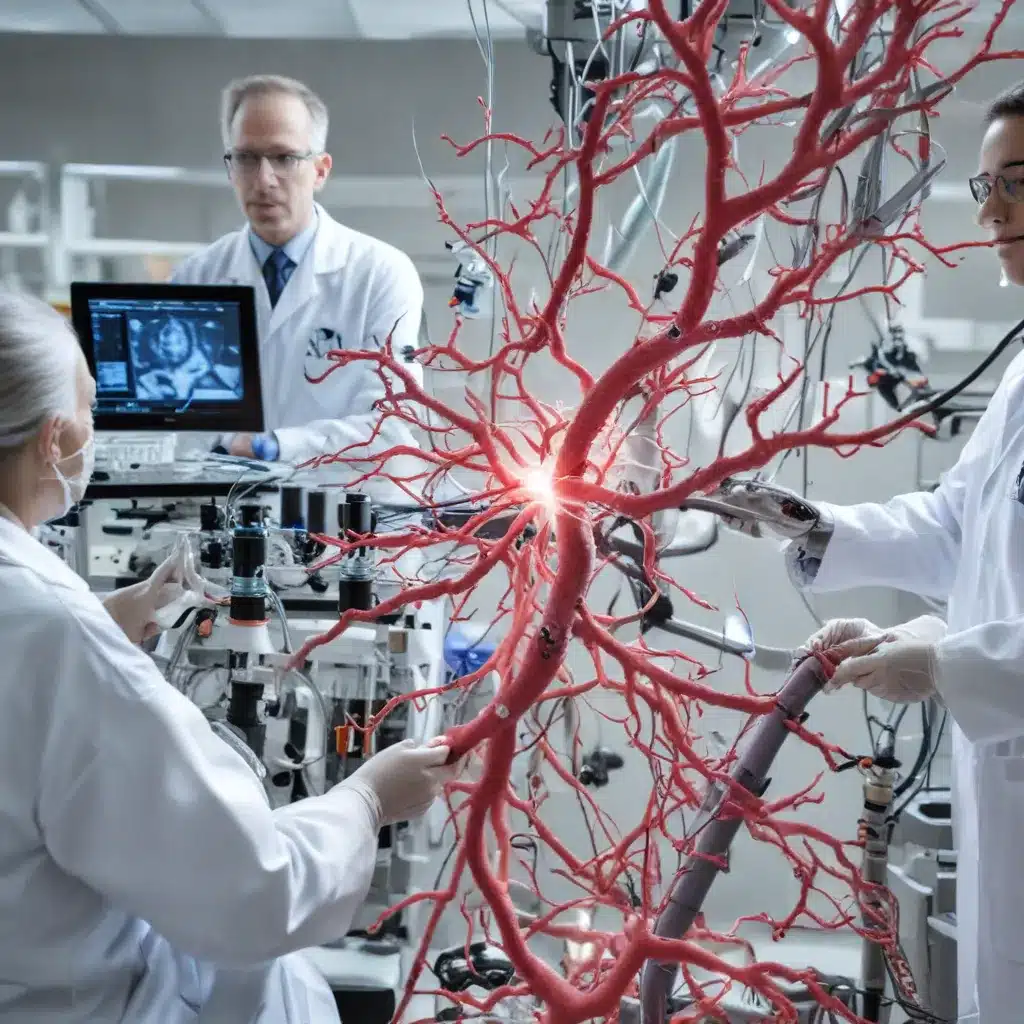
The Power of Partnerships in Accelerating Innovation
In today’s rapidly evolving world of healthcare, the ability to drive medical breakthroughs has become increasingly dependent on collaborative research and development efforts. At Stanley Park High School, we recognize the importance of understanding the role that biomedical research collaborations play in shaping the future of medicine.
Through this comprehensive article, we aim to explore the exciting advancements in biomedical research, highlighting the key partnerships and initiatives that are pushing the boundaries of what’s possible in healthcare. From harnessing the power of artificial intelligence (AI) to streamlining drug discovery, to leveraging decentralized experimentation platforms for cutting-edge nanomedicine and precision oncology, we’ll delve into the fascinating world of collaborative biomedical innovation.
Strengthening Biomedical Preparedness and Response
At the forefront of this collaborative landscape is the Biomedical Advanced Research and Development Authority (BARDA), a critical component of the U.S. Department of Health and Human Services’ Administration for Strategic Preparedness and Response (ASPR). BARDA’s mission is to provide an integrated, systematic approach to the development of essential vaccines, drugs, therapies, and diagnostic tools to combat public health emergencies, such as chemical, biological, radiological, and nuclear (CBRN) accidents, pandemic influenza, and emerging infectious diseases.
By partnering with industry leaders, BARDA is actively promoting the advanced development of medical countermeasures to protect Americans and respond to 21st-century health security threats. This collaborative approach has been instrumental in accelerating the development and deployment of crucial medical interventions during recent global health crises, such as the COVID-19 pandemic.
Advancing Women’s Health Research and Innovation
Another notable initiative that underscores the importance of biomedical research collaborations is the White House’s Executive Order on Advancing Women’s Health Research and Innovation. This landmark policy aims to address the longstanding research gaps in women’s health, which have historically excluded women and undervalued the study of their unique health needs.
The Executive Order establishes the first-ever White House Initiative on Women’s Health Research, bringing together a diverse coalition of federal agencies and departments to catalyze groundbreaking discoveries in women’s health. By prioritizing collaborative research, improving clinical trial inclusion, and developing robust data standards, this initiative is poised to transform the way we approach and fund women’s health research in the United States.
The Rise of ARPA-H: Accelerating Biomedical Breakthroughs
Complementing these efforts is the recently established Advanced Research Projects Agency for Health (ARPA-H), a bold new initiative within the U.S. Department of Health and Human Services. ARPA-H is designed to leverage the proven success of the Defense Advanced Research Projects Agency (DARPA) model, which has a track record of driving transformative innovations in the defense sector.
With a mission to accelerate the development of high-impact biomedical and health research, ARPA-H is fostering a collaborative, interdisciplinary approach to tackle some of the most pressing health challenges facing our society. By empowering visionary program managers to work with a diverse range of performers and approaches, ARPA-H is poised to deliver truly transformative and equitable health solutions.
Autonomous Experimentation: A Game-Changer in Biomedical Research
One of the most exciting advancements in biomedical research collaborations is the emergence of autonomous experimentation (AE) systems, also known as self-driving labs or materials acceleration platforms. These cutting-edge digital platforms are revolutionizing the way scientists approach research and development, enabling them to run a vast number of experiments autonomously, with unprecedented speed and precision.
By harnessing the power of AI, machine learning, and advanced data analytics, AE systems are dramatically accelerating the discovery of new chemicals, materials, and therapies with promising clinical and therapeutic relevance. From nanomedicine and AI-assisted drug discovery to precision oncology, these collaborative platforms are transforming the biomedical landscape, opening new frontiers in healthcare innovation.
Implications for Emerging Economies
As the global community embraces the transformative potential of biomedical research collaborations, it’s essential to consider the implications and opportunities for stakeholders in emerging economies. These rapidly developing regions face unique challenges, but they also possess a wealth of untapped expertise and innovative potential that could contribute to the advancement of AE and other cutting-edge biomedical initiatives.
Fostering international partnerships, strengthening STEM education, and developing robust institutional preparedness are just a few of the key strategies that emerging economies can employ to capitalize on the opportunities presented by collaborative biomedical research. By actively engaging in these global efforts, stakeholders in the Global South can help shape the future of healthcare innovation, ensuring that the benefits of these advancements are distributed equitably and responsibly.
Conclusion: Empowering a New Era of Biomedical Breakthroughs
The biomedical research landscape is undergoing a remarkable transformation, driven by the power of collaborative partnerships and the integration of transformative technologies like AI and autonomous experimentation. From strengthening global health security to revolutionizing women’s health research and driving cutting-edge discoveries in nanomedicine and precision oncology, these collaborative efforts are paving the way for a new era of medical breakthroughs.
By embracing the collaborative spirit that underpins these initiatives, we can harness the collective expertise, resources, and innovative potential of researchers, policymakers, and stakeholders around the world. Together, we can unlock the full potential of biomedical research to improve the health and well-being of individuals and communities across the globe.
We encourage the Stanley Park High School community to stay informed and engaged with these exciting developments in the world of biomedical research collaborations. By understanding the critical role that partnerships play in driving medical innovation, we can all contribute to a healthier, more equitable future.
For more information on the latest advancements in biomedical research and collaborative initiatives, please visit the Stanley Park High School website.

